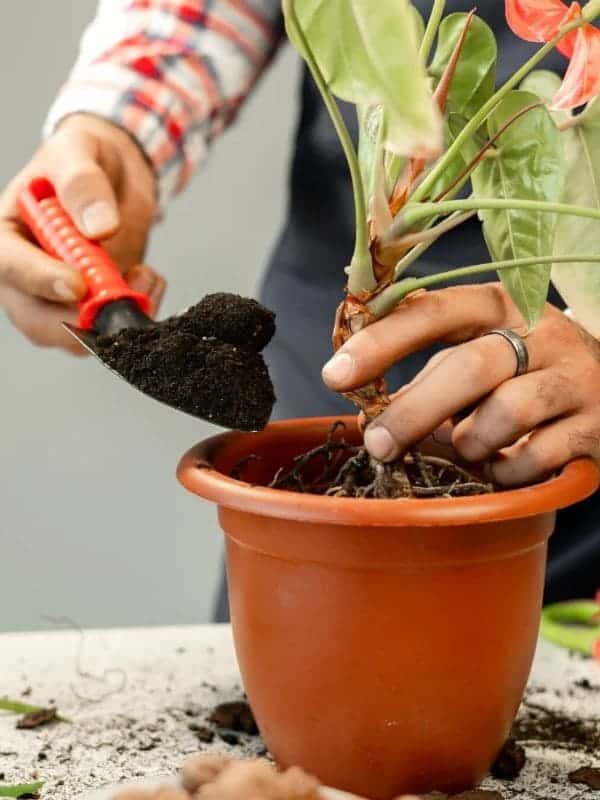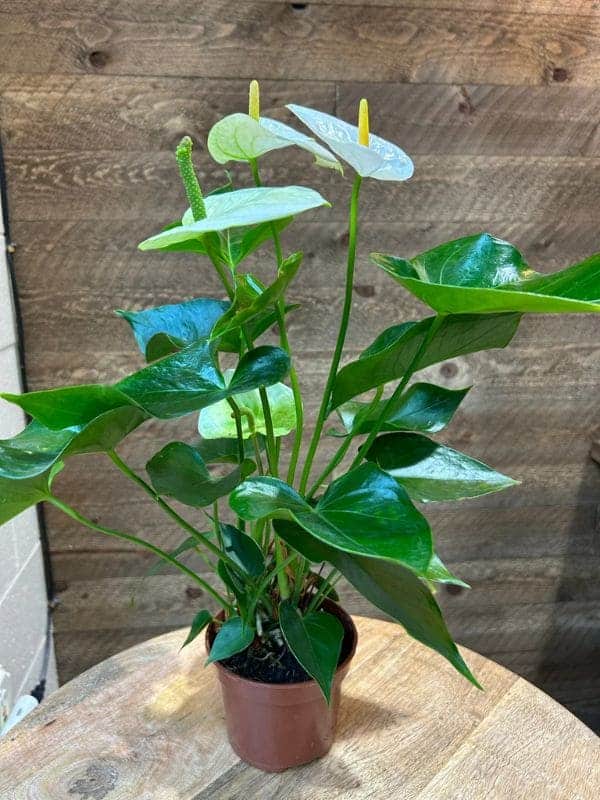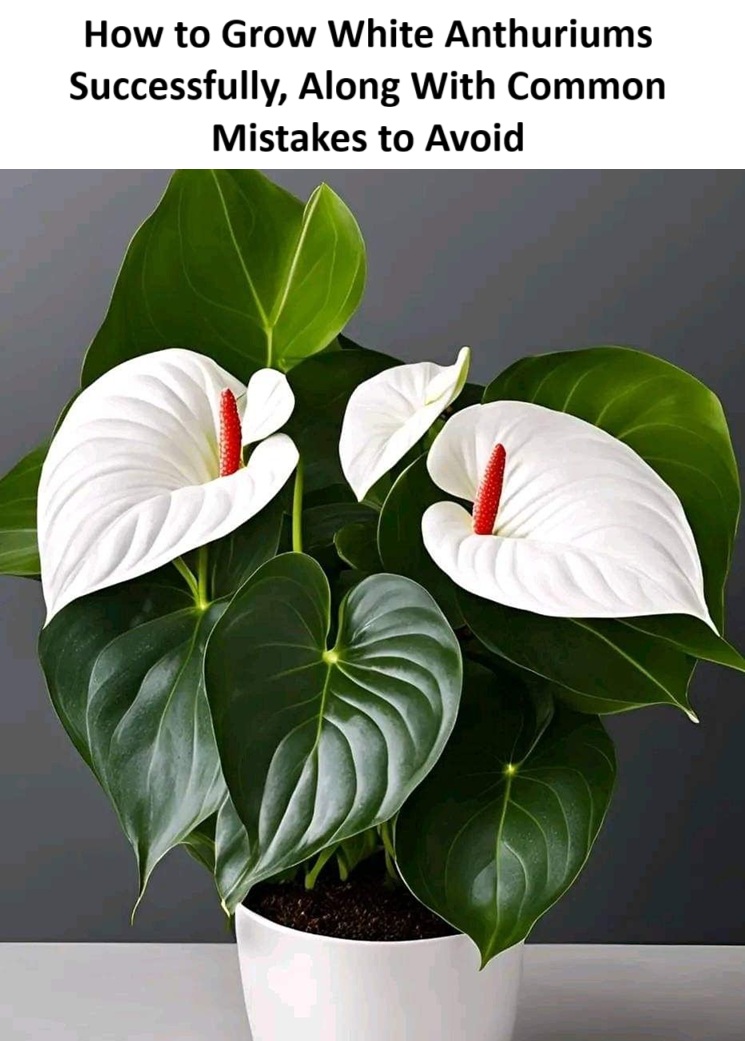These plants prefer consistent moisture but cannot tolerate soggy soil. I’ve learned to water only when the top inch of soil feels dry to the touch.
You should use room-temperature water, as cold water can shock the roots. After watering, let the excess drain completely, standing water is a surefire way to invite root rot.
The Right Soil for Anthuriums
White Anthuriums are epiphytic by nature, meaning they grow on trees in their native habitat rather than in dense soil. To replicate this, use a well-draining potting mix with good airflow.

I mix peat moss, perlite, and orchid bark in equal parts, which creates the perfect airy and moisture-retentive environment.
The soil should be slightly acidic, with a pH between 5.5 and 6.5, you can test this using a simple soil pH kit.
Fertilizing for Vibrant Growth
During the growing season (spring and summer), I feed my Anthuriums every 4–6 weeks with a balanced liquid fertilizer diluted to half strength. Over-fertilizing can harm the roots, so it’s better to use less than too much.

In fall and winter, when growth slows, I scale back to feeding once every couple of months.
Adding a touch of calcium in the form of crushed eggshells can also help strengthen their cell walls and support blooming.
